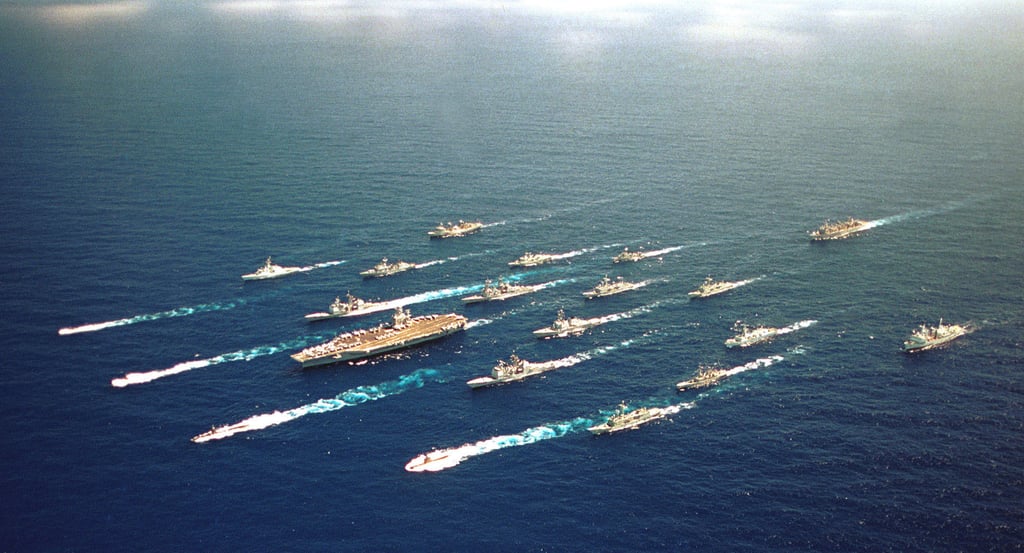Shall We Play A Game?
When the US conducted a simulated war against Iran, and lost.
3 min read


Background
War games, those simulated battles where military strategists test their skills, can be quite intense and serious affairs. They are conducted fairly regularly by many militaries to assess the outcomes of various combat scenarios that may appear in the wars of the future, and are used to identify shortcomings as well as successes. Every once in a while, something happens that turns the whole thing into a comedy of errors.
Case in point: the 2002 Millennium Challenge War Game conducted by the US.
Running from 24 July to 15 August, the exercise involved both live exercises and computer simulations. Mandated by the US Congress in 2002, the purpose was,
"to explore critical war fighting challenges at the operational level of war that will confront United States joint military forces after 2010".
The operation had taken 2 years of planning and involved over 13 thousand (genuine) participating soldiers.
The budget was $250M, making it the most expensive war simulation in military history.
The setup
The whole idea of the mission was to test their military capabilities and see how they would fare in a hypothetical war scenario against "an unnamed Middle Eastern country" in the Persian Gulf.
One side, "Blue Team" would play the US, essentially represented by a naval battle group including a fully loaded aircraft carrier and supporting ships armed with AA defence systems and tactical cruise missiles. The other side, "Red Team" was to represent the fictional middle-eastern state (often associated with Iran or Iraq).
The man who screwed up the plans
In order to make the war game as realistic as possible, the US military enlisted the help of retired Marine Corps Lieutenant General Paul K. Van Riper to lead the Red Team.
Van Riper, a respected military thinker, had participated in previous war games, including the previous year’s Unified Vision 2001, in which he played the role of a landlocked regional power. During this exercise, he was informed that his missile silos had all been destroyed, even though the opposing side had no way of knowing their locations. When he complained about the realism of such an action, he was informed that the following year's exercise would be conducted more fairly.
Due to his criticisms of both UV2001 and Secretary of State Donald Rumsfeld, Van Riper was reportedly surprised at being invited back. Not one to miss an opportunity however, he determined to take the 2002 Millennium Challenge very seriously, and instead of playing by the conventional rules, decided to unleash his ingenuity and throw a wrench in the whole operation.
From the outset, he employed unconventional tactics, including the use of motorcycle messengers to communicate with frontline troops and WW2 style light signals to coordinate
aircraft launches. This allowed his initial manoeuvres to go undetected.
USS Abraham Lincoln Battle Group
Pic by PH2 Gabriel Wilson
How it played out
• Red received an ultimatum to surrender from Blue, demanding a response within 24 hours.
• In a preemptive strike, Red launched a massive salvo of cruise missiles and suicide boats that overwhelmed the Blue forces' defences and destroyed sixteen warships including one aircraft carrier and ten cruisers.
The same success in a real life conflict would have resulted in the deaths of over 20,000 service personnel.
• Chaos ensued and the Red Team quickly followed up by attacking the remnants of the Blue Team fleet. The US military, who were expecting a predictable and controlled exercise, were caught completely off guard by Van Riper's unorthodox methods. Their high-tech surveillance systems and advanced weaponry were rendered useless against the Red Team's tactics.
The fallout
The higher-ups were not amused. Three weeks had been allocated for the exercise to be conducted, and there were still two and a half weeks remaining. Egos in the top brass couldn't handle the fact that their meticulously planned war game had been turned into a farce by a retired Lieutenant General with a mischievous streak.
So, what did they do?
They hit the reset button, "re-floated" the sunken fleet and changed the rules midway through the exercise. The Red Team positions were given away to the Blue Team and Van Riper was forbidden from using certain technologies and even from shooting down incoming aircraft.
Van Riper was again, extremely critical of the new scripted exercise and decided to resign from the war game in protest. And who can blame him?
What was learned
The US military, for all their high-tech gadgets and advanced weaponry, were no match for Van Riper's unconventional tactics. The exercise highlighted the dangers of perceived invulnerability and the importance of thinking outside the box.
Critics claimed that the new rules were implemented to justify the Pentagon's upcoming expenditure on various technologies. They also alleged that the whole exercise was a waste of $250M ($450M in 2024).
But hey, you have to use up that runaway defence budget one way or another.




